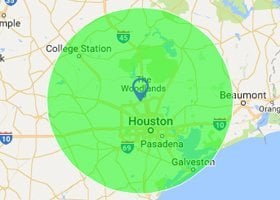Top 5 Lift Station Problems And What To Do About Them
When people think of sewage treatment, they don't tend to think of lift stations.
People view the plant as the last stop on their journey after their mess has traveled through miles of pipes and now needs to be lifted up above ground level by a pump or series of pumps called a lift station.
As with any machine that you're pumping dirty water through, lift stations can have many problems that need to be solved. This article will discuss the 4 most common problems with lift stations and what to do about them.
1. Insufficient Capacity
The capacity of a lift station refers to how much flow or wastewater it can handle during its daily operation.
Lift stations are usually sized according to the flow of wastewater coming through them. If more flow is added than can be handled, some wastewater will need to bypass the lift station, which reduces its operational efficiency and costs money.
When this happens, operators may try increasing how much wastewater is pumped into the lift station or trying to find other solutions such as increasing the capacity of the pump station.
2. Station Not Operating Efficiently
The efficiency of a lift station is based on how much power it consumes compared to how much wastewater it pumps up and out of its area or county.
A healthy lift station should use low amounts of electricity, but if it's using abnormally large amounts of power, there may be a problem with its pumps or other components.
In addition to using too much power, a lift station might not be moving as much wastewater as it should out of the area. This could be caused by problems such as broken valves, incrustations on the inside of pipes, and improperly working motors.
3. Discharge Above Grade Level
The discharge from a lift station should always end up above ground level. When this doesn't happen and wastewater ends up on the ground or enters nearby water sources, it can cause environmental issues as well as legal problems for the station.
If this happens, operators should check to make sure there are no leaks in the lift station's piping system and also check for problems with the pumps themselves.
4. Odor Problems
Lift stations can have difficulty dealing with certain types of wastewater because of their components or location. Odors are one example of this.
If the wastewater that comes into a lift station happens to be particularly smelly or corrosive, it can cause issues with the pumps and other components. If this occurs, operators might try using different raw materials when they're disposing of wastewater to lower its odor or make it less corrosive.
5. Bypass Gate Is Shut
Finally, the most common problem with lift stations is that the bypass gate is shut down. This is usually caused by a jammed check valve, which can happen due to excessive sediment and debris buildup in the station's piping system.
To fix this issue, operators should clean out all of the sediments and other buildups from their lift station and then test the gate to make sure it operates properly.





